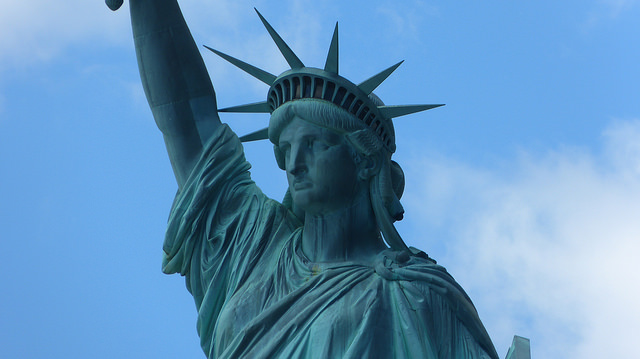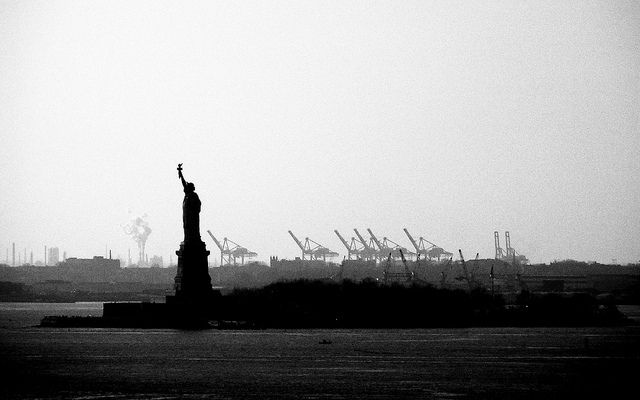Stephen Miller's Explanation of the Statue of Liberty was Bonkers
By:
During a briefing at the White House on Wednesday, Senior Adviser to the President Stephen Miller attempted to explain President Trump's new immigration policy, which would dramatically cut legal immigration to the United States by establishing a new, more selective application process. As Trump described it: "This competitive application process will favor applicants who can speak English, financially support themselves and their families and demonstrate skills that will contribute to our economy."
At the briefing, Miller ended up in a testy exchange with CNN's Jim Acosta. And some of what Miller said had observers scratching their heads.
Explaining the Statue of Liberty to reporters, Miller attempted to downplay its association with immigration.
In a question about how Trump's policy squared with American tradition, Acosta, asked "The Statue of Liberty says 'Give me your tired, your poor, your huddled masses, yearning to breathe free.' It doesn't say anything about speaking English or being able to be a computer programmer. Aren't you trying to change what it means to be an immigrant coming into this country...? " Miller responded, "The poem that you're referring to was added later. It's not actually a part of the original Statue of Liberty."
Here's a quick history lesson on the Statue of Liberty.
Miller is correct that Emma Lazarus' "The New Colossus"—the poem bearing the famous words that Acosta quoted—was not inscribed on the statue originally. The Statue of Liberty was a gift from France, conceived in 1865 by Edouard de Laboulaye, a prominent philosopher of his time. According to the National Park Service, Laboulaye, a staunch abolitionist, intended the statue to commemorate the end of the Civil War, and institutionalized slavery in the U.S.. According to Quartz, the deal for financing the statue was clear cut: the French people would finance the statue, and the Americans would finance the pedestal.
 Alex M. Hayward - flickr.com
Alex M. Hayward - flickr.com
Cut to 1883. The United States government had not raised enough money to install the statue atop its pedestal. So a group of artists held an auction to raise money, commissioning poems for an exhibition catalog, according to Quartz. Lazarus, a Jewish-American poet, imagined the Statue not as a symbol for the end of slavery, but as a guide to the immigrants sailing by the hundreds into New York Harbor, lighting the way with her torch.
The idea stuck.
"The New Colossus," was well-received. According to Quartz, "Fellow poet James Russell Lowell praised “The New Colossus,” saying Lazarus gave the statue its raison d’etre, and remarking that he liked it better than the building itself." And in 1903, 19 years after Lazarus's death, the poem was inscribed on the building itself.
This image of Lady Liberty persisted through the years.
From FDR's 50th anniversary speech for the Statue, and to a 2015 speech delivered by President Obama, Lazarus's interpretation has lived on, eclipsing even Laboulaye's original intent. Even groups that were opposed to immigration in the past clearly acknowledged the statue's meaning for immigrants, albeit in a negative way. According to the National Park Service, "Nativists (Americans who opposed immigration) linked the Statue to immigration most starkly in political cartoons critiquing foreigners' threats to American liberties and values."
 Diego Torres Silvestre - flickr.com
Diego Torres Silvestre - flickr.com
So why would Miller try to downplay this universal interpretation of the Statue of Liberty? Probably because "give me your tired and your poor, your huddled masses yearning to breathe free" doesn't sound at all like "give me 'applicants who can speak English, financially support themselves and their families and demonstrate skills that will contribute to our economy.'" Since Trump's policy seems like a direct refutation of the iconic words emblazoned on the statue, perhaps Miller thought the only way to make the policy seem legitimate was to attempt to de-legitimize the poem itself.
